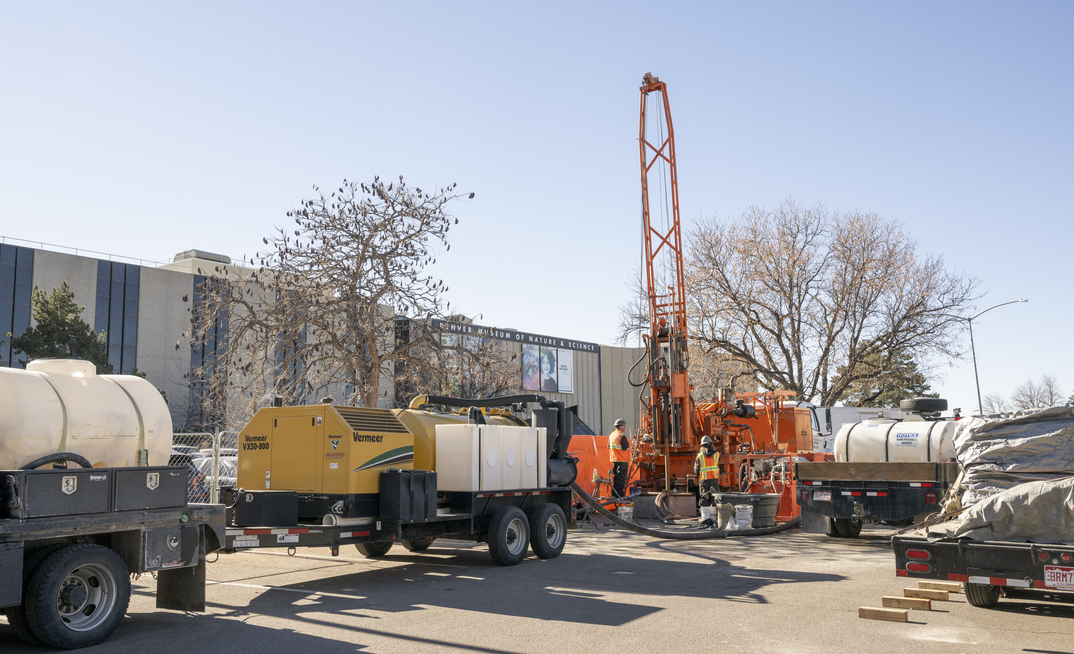Denver Museum of Nature & Science kicked off a geothermal feasibility project in the spring of 2024 with a $250,000 grant from Gov. Jared Polis' Geothermal Energy Grant Programme at the Colorado Energy Office. By January 2025, two rigs showed up to drill test holes underneath the Museum's north parking lot, gathering localised data about thermal properties hundreds of feet down below the surface.
But when you start drilling deep into the Earth's crust at a museum full of scientists, the urge to survey and study what is down there becomes irresistible.
Alongside the geothermal drilling project, the Museum conducted a scientific coring initiative to better understand the geology beneath City Park and the larger Denver Basin. The scientific core was drilled nearly 1000ft below the surface, passing through layers of gravel and sand deposited by the South Platte River before reaching ancient bedrock from the Late Cretaceous Period. While it was not surprising that scientists uncovered fascinating geology all the way down, the scientific core extracted something that surpassed everyone's expectations: a partial dinosaur bone dating back 67.5 million years.
This was a monumental discovery. Not only is it exceedingly rare to find a dinosaur fossil in a narrow drill core, but this fossil turned out to be the deepest and older dinosaur bone ever discovered within the Denver city limits.
It's basically like winning the lottery and getting struck by lightning on the same day
"It's basically like winning the lottery and getting struck by lightning on the same day," Dr. James Hagadorn, curator of geology at the Museum, said. "No one could have predicted that this little square foot of land where we started drilling would actually contain a dinosaur bone beneath it!"
The partial bone took some time to study before the scientists felt confident that they were indeed looking at a real animal fossil. Embedded in a layer of rock formed during the Late Cretaceous Period, the scientists identified the fossil as part of a vertebra from a plant-eating dinosaur, similar to a Thescelosaurus or Edmontosaurus. Such creatures lived in present-day Denver in the years before the catastrophic asteroid impact that ended the age of dinosaurs.
Dr. Patrick O'Connor, director of Earth & Space Sciences at the Museum, was part of the team that identified the fossil. "This may be the most unusual dinosaur discovery I have ever been a part of," he said. "Not only is it exceptionally rare to find any fossil as part of a drilling project, but the discovery provided an outstanding collaborative opportunity."
For Earth Sciences Research Associate Dr. Bob Raynolds, the project was an extraordinary experience: "In my 35 years at the Museum, we've never had an opportunity quite like this – to study the deep geologic layers beneath our feet with such precision. That this fossil turned up here, in City Park, is nothing short of magical."
The fossil analysis of the partial dinosaur bone was led by Museum postdoctoral scholar Dr. Holger Petermann with the contribution of many others from the Museum's earth sciences department. Their research was just published in the journal Rocky Mountain Geology.



















